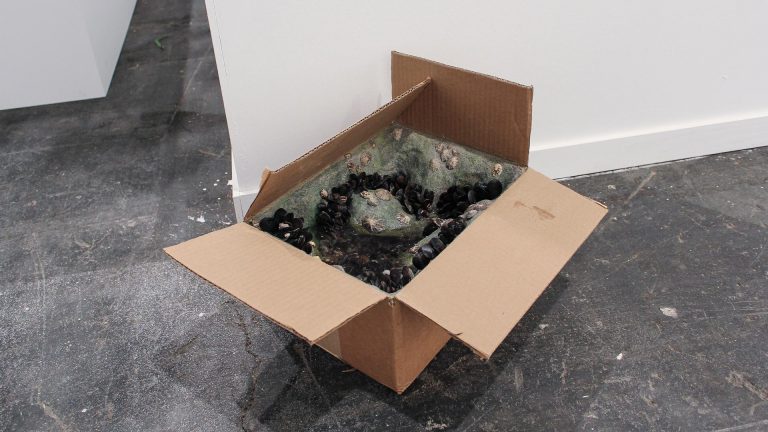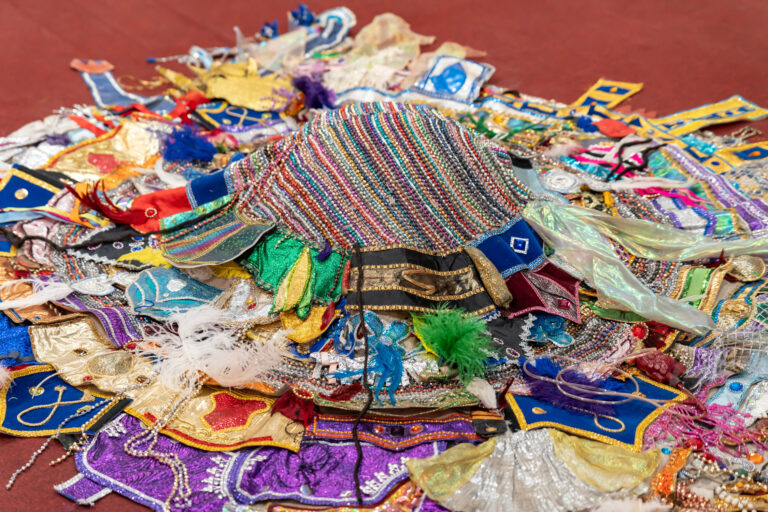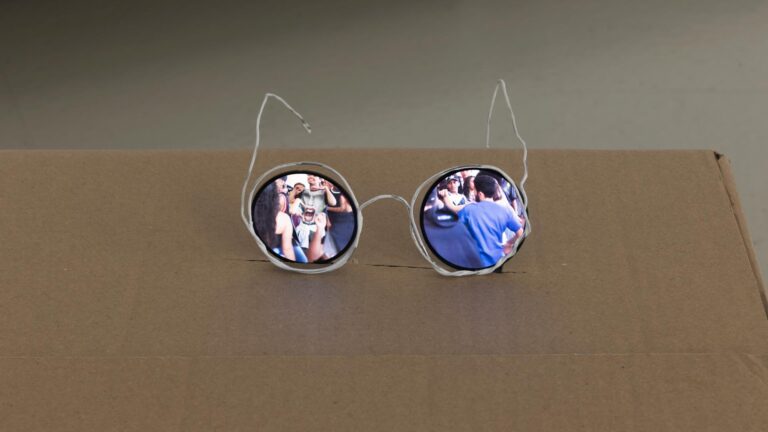The reader, having not written the poem
will remain unaware of the
composition of this wax fish
J. Brossa [1]
Fernando García Méndez (born Coín, 1988) unlike readers of Brossa’s poema Civil does not shirk from explaining the work being contemplated. The proposal of this artist, who now lives in Granada, is conceived as a game of permutations exhibited before the spectator’s gaze. Each of these reveals a different aspect of the poetic and analytical mechanism that is the core of the work. Thus, the spectator is presented with all the elements necessary to make a constructive appraisal. They will have all the essential materials to recreate it in their own eyes and understand of what it is composed.
In this manner the combinational art of García Méndez allows his sculptures to move between the exhibits, widening their meaning in accordance with the context. His work responds to the growing modern need of images and narratives in constant transformation. Conscious of the insatiable need of the contemporary eye, the pieces are born, disappear and are reborn before the public’s gaze, permitting new interpretations and contexualizations on each occasion.
This being the case, it is no surprise that to find one of the catalyzing works in Un reflejo reverso de un reflejo (a reversed reflexion of a reflexion), the artist`s second exhibition at the Isabel Hurley Gallery in Malaga, is entitled Guiño, (wink). This piece is composed of transparent epoxy resin wings embedded with eyes —both open and closed—reminiscent of funerals, almost of archealogy; drawn and sculpted in metal beer bottle caps. The gaze flies: a myriad of moving eyes that, as Cirlot, in his Dictionary of Symbols, reminds us and refers to “the spiritual relationship of vision to second-sight”[2] Conniving winks and lighting: the instant in which the eyes open and the story is completed. The exhibit is illumination and happening.
The exhibition is, furthermore, a reflexion of the latest developments in the artist’s work as an exploration of the interchangeable mobility of the gaze. If for Merleau-Ponty the eye creates reality, [3] García Méndez endows it with a constructive capacity. When the eye alights on the sculpture it reproduces the cognivity of the artist on the retinas of the gazers, running over the materials and connecting the plasticity with the abridged titles.
In their deliberate fragility —in the sense of their being unresolved or unfinished— the works acquire a participative dimension. So, pieces like Caleidoscopios (kaleidoscope)) a group of three flower pots in a pyramid have the kaleidoscopes inserted in their drainage holes. Or Toroide. Flotante (toroid. floating) —a helicoidal construction woven with natural fibres around a life belt that is later removed— where contents and container converse from their respective inconclusive or absent areas, and expose the mechanism behind the shape. On other occasions, as in the case of Maniquí Andrógino (androgynus mannequin) or Hoguera (bonfire) it is precisely the closed, rounded shape that is questioned by using imitation, optical illusion or hybridisation strategies.
In this way, all through the exhibition we are taking part in a formal and discursive shift that provides the spectator with a complete visual tool kit. The sculptures, out of the sight of another eye, will once more dismantle themselves and await a new expositive opportunity. There lies their vulnerability and their strength.
From the creator’s wink to the constructor’s eye: this is the journey proposed in an exhibition with multiple axes and subtleties. Unintentionally this itinerary echoes the words with which Ibn Jaraf al Muradi justified the usefulness of his treatise on the mechanical engeneering and construction of automatons, El Libro de los Secretos sobre el resultado de los pensamientos: “A partir de ahora, nada impedirá que también los veáis vosotros, porque, con estas indicaciones, podréis construirlos una y otra vez” (From now on nothing will prevent you from seeing them because with these instructions you will be able to build them again and again)[4].
David Moran Álvarez
27 December 2024
[1] BROSSA, Joan. Poemas civiles. Translation and prologue by José Batlló. Editorial Visor, 1989.
[2] CIRLOT, Juan Eduardo. Diccionario de Símbolos (Second edition). Editorial Labor, 1969.
[3] MERLEAU-PONTY, Maurice. El ojo y el espíritu. Editorial Trotta, 2017.
[4] AL MURADI, Jaraf. Libro de los secretos acerca de los resultados de los pensamientos. Manuscrito Or.152 Biblioteca Medicea-Laurenciana, Florence. Cited by GONZALEZ-FERRIN, Emilio en Al Andalus: Oriente en Occidente. Ed. Shackleton, 2024.




























































